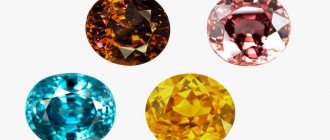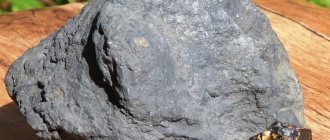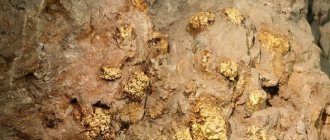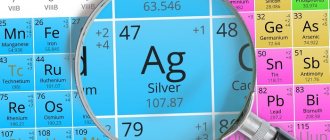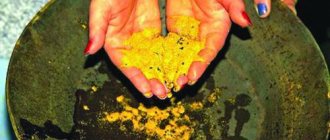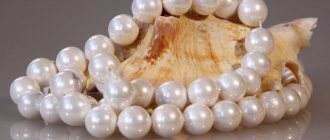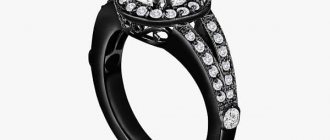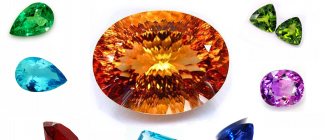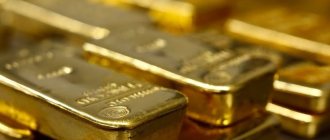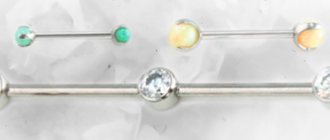Diamonds and diamonds created from them have long been the most expensive jewelry. Some unique stones cost a fortune. However, standard small diamonds are also quite expensive. It is not surprising that almost from the very beginning of active trade in these jewelry, counterfeit stones began to appear. However, the real flourishing of imitation diamonds and polished diamonds came in the second half of the 20th century due to the powerful development of technologies for the synthesis of various materials.
Creating stones in the laboratory - fake or not
Diamonds created artificially from synthetic materials are incorrectly called copies. This is due to the fact that identical materials are used for their manufacture, but they are obtained in different ways. A real diamond and a fake differ in that in the first case the mineral is born in nature, and in the second it comes from human hands.
You may be interested in: What is a necklace? Jewelry for women made from natural stones
Artificial stones have all the properties of real diamonds:
- high strength;
- ability to conduct heat;
- identical resistance indicators;
- pronounced shine;
- characteristic structure;
- same refractive index.
You may be interested in: Garnet stone: description with photo, properties, who is suitable for it
The only difference between a fake diamond is that it does not have any defects. Due to this feature, they are used both in jewelry production and in industry. According to statistics, no more than 20% of natural stones are suitable for use in jewelry. The remaining 80% have cracks, inclusions, and cloudiness. If you use high-quality materials when creating synthetic stones, it is very difficult to distinguish a natural stone from a fake, even with modern equipment.
WHERE SYNTHETIC DIAMONDS ARE USED
High tech
The main areas of application of artificial diamonds are industry and high technology:
- cutting tool - artificial diamonds are one of the hardest substances;
- thermal conductors - the combination of high thermal conductivity and minimal electrical conductivity makes artificial stone indispensable as a heat sink for high-power lasers and transistors;
- optics - natural diamonds are not suitable for these purposes, as they have too many defects;
Moissanite
Jewelry industry
The technological breakthrough has raised the question of the need for jewelry and diamond mining companies to control the flow of artificial stones into the jewelry market. Now the growth of their sales is limited legally. In addition to this, some companies are opening their own production of artificial jewelry diamonds.
We recommend: How to distinguish SAPPHIRE from a FAKE
That's exactly what De Beers did. The diamond mining corporation refused to engage in diamond production for a long time. However, in 2022, she created a subsidiary, Lightbox Jewelry, which began selling artificial stones under its own brand.
Difference between scientific and popular names
Many scientists have worked in the field of imitation diamonds. “Made in the USSR” - this marking can be seen on precious jewelry with “diamonds” from the times of the Soviet Union. In the area where they are actively involved in the “growing” of synthetic stones, they are named according to production technology.
You may be interested in: How to clean a silver cross: effective methods, remedies
If the creation involves high pressure and temperature, then the abbreviation HPHT is used, and the CDV marking indicates that the chemical vapor deposition technique was used. An imitation diamond does not always act as its full copy. In common people they are better known as cubic zirconia, moissanite, rhinestone, ferroelectric, rutile, fabulite. However, the most popular is zirconium dioxide, which has no similarities with a real diamond.
Out of ignorance, most people call all fake stones cubic zirconia. Naturally, such a definition cannot be considered correct. However, it does an excellent job of simulating diamond, since it glitters in the sun and shimmers with colors, which is due to its high refractive power. Due to this, cubic zirconia is often used in jewelry.
The history of artificial diamonds
After natural diamonds were discovered in nature, a hypothesis was established that they cannot be grown under artificial conditions. Around 1797, after it was established that the stone was composed of carbon, scientists began to speculate about the possibility of “growing” them in the laboratory.
The first attempts to implement the idea occurred in 1926, but they were unsuccessful. The sample that scientists received bore little resemblance to the real stone. However, this experience is considered a starting point for further testing and research. In 1941, General Electrics noticed this.
Initially, it was assumed that the technology would involve heating carbon to 3000 degrees Celsius under a pressure of 5 GPa. It was not possible to develop it to the end, since the Second World War began. It took scientists, researchers and company employees 10 years before they could return to this work again.
A good quality stone (imitation diamond) was obtained only in 1953. It could already be used in mass production. The only drawback was their excessively small size, which did not allow them to be introduced into jewelry production, so the diamonds went into industry.
You may be interested in: Pandora rings: reviews, review, sizes. Pandora rings in silver and gold
A relative solution to the problem occurred in 1970, but the maximum size of a synthetic stone was within its weight of 1 carat. In modern laboratories everything is different. The world's largest diamond created under artificial conditions is registered in the Guinness Book of Records. Its weight is 34 carats.
What colors are fake stones?
Natural diamond imitation is a complex and lengthy process. Therefore, today counterfeits are obtained in special laboratories. Many consumers are interested in how wide the color range of synthetic stones is. Unfortunately, the choice is so small that it is limited only to blue and yellow shades.
Along with this, transparent “diamonds” have always been more popular, but their creation requires a lot of time and effort. The process of obtaining colorless stones is complicated by the fact that scientists must constantly monitor the process and prevent boron or nitrogen from entering the composition.
To obtain artificial blue diamonds, bromine is used (it is added at a certain stage of production). The shade can vary from a thick, rich tone to a light, barely perceptible shine. Yellow stones are “grown” with the addition of nitrogen. Sometimes they also make black diamonds. In this case, nickel is used.
How to choose
When purchasing an artificial diamond, it is important to choose carefully so as not to stumble upon an imitation. During external examination, the shine, purity, and shade of the stone are assessed. Colorless specimens without flaws are preferred. Experts advise checking the stone you like under multiple magnification - this is the only way to make sure that there are no defects. The price of synthetic diamond is 10-15% lower than prices for natural stone.
When choosing an imitation diamond, it is preferable to take moissanite. Its optical and physical parameters are closest to natural stone.
In what areas are artificial diamonds used?
Approximately 80% of all fake stones are used in various industries. In particular, they are used for the manufacture of bearings and drill tips. If the sample is small, it will be useful for processing into crumbs or dust. Subsequently, it will be used to process the surface of knives, as well as grinding tools.
The diamond imitation process plays a special role in the production of electronics. This material is subsequently used to make needles, some parts of microcircuits, and layers in chips. Thanks to this, it is possible to maintain thermal fluidity and resistance level. Diamonds created using CVD technology are used to make parts for mobile phones. They are actively used to create medical laser beams. These are just some of the sales areas where high-quality fake stones can be sold.
Receiving technologies
Since it is known that diamonds can be “grown” in laboratory conditions, it is worth understanding how this happens. In modern factories, only two technologies are practiced. The HPHT technique was the first to appear, and it remains the most popular today. The process occurs by heating carbon under pressure to critically high temperatures. The main advantage is the low cost of counterfeit diamonds.
The next technology is CVD. To understand the process more simply, it is necessary to imagine a chamber filled with carbon gas. Subsequently, it will be deposited on a silicon wafer by heating or using microwave rays. The result of all actions is to obtain a plate up to 3 mm thick. That is why such diamonds are often used in electronics and optics.
There are laboratories that specialize in growing synthetic diamonds, using “explosive” technology that helps produce diamond chips. The specificity of the process is that during an explosion, increased pressure is created and a lot of heat is also released. If you do not immerse the camera in water in time, the stones will overheat and turn into graphite.
The technology is not perfect, since that very precious crumb is inside the graphite. To obtain it, you will have to go through a washing process (the layer is boiled for 24 hours in nitric acid at 250 degrees Celsius). More modern laboratories are still working on a new technique - producing fake stones using ultrasonic cavitation. But it is currently in the testing stage.
Growing techniques
There are several main technologies for producing artificial diamonds. The most common is the creation of a crystal under increased pressure and heating HPHT. This method requires the use of a heavy press. It is cheap to implement, simple and gives high-quality results.
Copying nature
To implement the HPHT technology, a heavy press and a working chamber are used. The object heats up and is under great pressure thanks to the press. The stone blank is placed in the working chamber, and after a week the finished crystal is taken out. The method allows you to obtain cubes and octahedrons.
In a gas environment
Chemical deposition is a method of producing a crystal by depositing carbon from a gas suspension onto a seed. Development of the technology began in the 1980s. The method is flexible, convenient, applicable for small industrial areas, and allows precise control of the chemical composition of the mineral. Thin films are grown on large workpieces in a gas environment. The technology does not require increased pressure.
Making a diamond at home
You can create an artificial diamond yourself. To do this, use olive oil, a couple of cups, 3 graphite rods, and thread. The oil is poured into a container, a thread is laid along the diameter, the graphite is tied with it, the rod is placed on matches or toothpicks, and left for half an hour. After waiting, remove the thread, turn the container over, lay out a couple of clean rods, and oiled one on them. The slates are covered with a second container and placed in the microwave. A diamond is formed in the oiled area. During the process, sparking may occur in the furnace.
You can make an artificial diamond even at home
Modern technology for producing fake diamonds
In mid-1999, scientists found a way to produce diamonds from animal or human ashes. Three years later, this technique was brought to public attention. Due to widespread publicity, the business of creating diamonds from remains has become very profitable. As technology advances, today it is not necessary to use all the ashes to make a stone. Ashes from a lock of hair will be enough.
The entire process of obtaining the stone lasts approximately 12-14 weeks, and its weight will be from 0.25 to 2 carats.
How much does a fake diamond cost?
The very word “imitation” makes people think that jewelry made from such stones will be cheap. It must be said that this opinion is erroneous, and sometimes a fake is much more expensive than a natural diamond.
There are several reasons for this, for example, it is very difficult to distinguish them by appearance; you can get a “stone of pure water” and not worry that it will fade. The price is primarily influenced by the weight of the diamond, but the creation method and the quality of the cut are also taken into account. Most often, cubic zirconia (zirconium dioxide) is chosen for counterfeiting. Its cost per 1 carat is in the range of 1.5-6 dollars, but if you use moissanite, you will have to pay 75-100 dollars.
Hardness standard
Diamond, or, in scientific terms, the cubic allotropic form of carbon, is a unique material in all respects. The hardest on the Mohs mineralogical hardness scale (that is, it can be used to cut all other stones, including the previous one on the scale, corundum - sapphire and ruby). It is also a wide-gap semiconductor and has a very low coefficient of friction for metal (which allows it to be used in metalworking - both in cutting and drilling), as well as the highest (in comparison with other materials known to scientists) elastic modulus and the lowest compression ratio.
However, initially a diamond (in its cut form it is called a diamond) was valued for its, so to speak, visual qualities - brilliance and play (in physical language - a high refractive index and dispersion). In ancient times, this stone was very rare, due to the peculiarities of its extraction, and was valued above all other precious stones. Over time, the techniques and techniques of cutting diamonds improved, which made it possible to enhance their brilliance, as well as methods for extracting diamonds.
